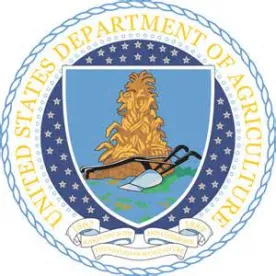As reported in our previous GT Alert, Equine Herpes Virus (EHV) cases are currently on the rise in the United States following a recent European outbreak. New EHV cases are being reported in Florida and Kentucky, two epicenters of the American equestrian world.
EHV-1, the strain at issue in these recent outbreaks, is highly contagious and can lead to death among horses. Equine Herpesvirus Myeloencephalopathy (EHM), the neurologic disease associated with EHV-1, is also often lethal.
Although the United States Department of Agriculture (USDA) has not recently updated its advice on how best to combat and contain EHV, recommendations from past outbreaks provide key guidance on keeping your equines safe and stopping the virus’s spread. Moreover, the USDA’s guidance closely tracks restrictive measures recommended by the United States Equestrian Federation (USEF).
Both EHV-1 and EHM spread easily, mainly via direct horse-to-horse contact, but also indirectly through contact with shared barn equipment, such as:
- Contaminated human hands or clothing;
- Contaminated horse equipment or tack;
- Contaminated horse trailers;
- Contaminated rags or other grooming equipment; or
- Contaminated feed or water buckets.
EHV-1 spreads primarily via respiratory droplets expelled from an infected equine. The virus can remain airborne for short distances, meaning the air around a horse shedding the virus may itself be contaminated.
In order to slow the spread of EHV-1 and EHM, horse owners should pay close attention to their animals’ signs and symptoms, particularly following travel to, travel from, or boarding on premises with a known case of EHV-1 or EHM. Signs and symptoms of infection include:
- EHV-1: The USDA defines a “suspect EHV-1” case as “an exposed horse that becomes febrile (rectal temperature greater than 101.5 degrees Fahrenheit) during the monitoring period.” A case of EHV-1 can only be confirmed after laboratory testing.
- EHM: The USDA defines a “suspect EHM case” as “an exposed horse exhibiting signs of central nervous system dysfunction, including most commonly posterior incoordination, weakness, recumbency with inability to rise, or bladder atony.” Other less common signs of central nervous system dysfunction include ataxia, loss of tail tone, lethargy, circling, head pressing, and head tilt. EHM cases are typically confirmed by a positive nasal swab or blood test, or, sadly, in postmortem testing following cases of sudden death.
If your horse has been exposed to EHV, the USDA recommends swift action, beginning with biosecurity and strict isolation of horses with suspect or confirmed cases of the virus:
- Immediately stop horse movement to and from the premises;
- Immediately quarantine sick horses in a separate building, paddock, or isolation facility;
- Immediately consult a veterinarian or animal health officials to determine local notification requirements, including whether you need to report confirmed cases, suspect cases, or clinical signs to your state’s State Veterinarian.
- Collect samples from exposed horses to send to the nearest available laboratory for EHV-1 testing;
- Monitor exposed horses for fever and/or neurologic signs for at least seven (7) days, and log temperature data for each monitored animal;
- Discontinue or reduce strenuous training or exercise for exposed horses;
- Regularly sanitize communal barn equipment; and
- Refrain from sharing equipment among horses on the premises.
Protective measures should not be limited to sick horses. The USDA recommends that herd and pasture mates should also be kept isolated and have their temperatures monitored daily. To ensure accurate temperature readings, these horses should not be administered any nonsteroidal anti-inflammatory drugs (NSAIDs), which are known to mask fever in horses. The USDA presents two isolation options for herd mates, depending on the feasibility of daily testing:
- Option 1, testing: Clinical cases and herd mates isolated for at least twenty-one (21) days past resolution of clinical signs, then conduct a releasing test on all horses on the premises; or
- Option 2, no testing: Clinical cases and heard mates isolated for at least twenty-eight (28) days past resolution of clinical signs.
For more information and a valuable collection of resources on EHV-1 and EHM, please visit the USDA’s Equine Herpesvirus (EHV) site here (last updated June 2, 2020).



 />i
/>i

